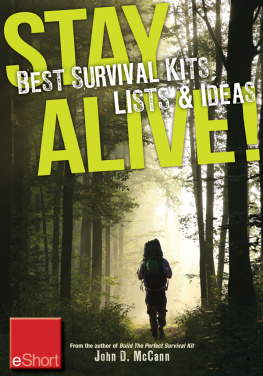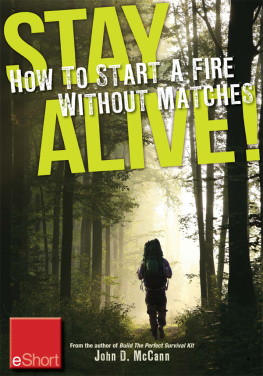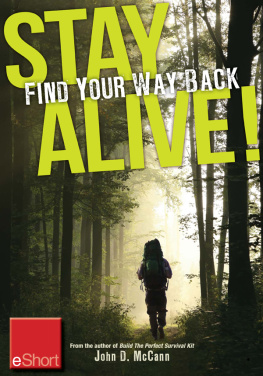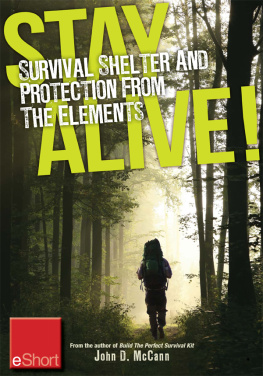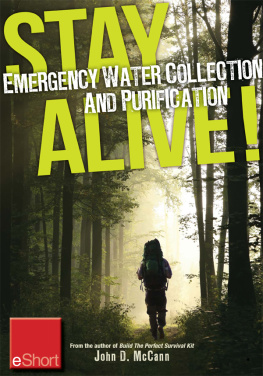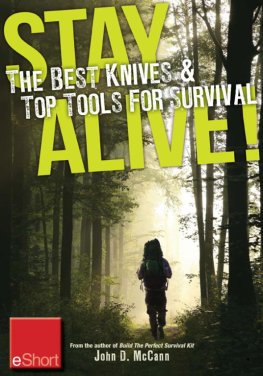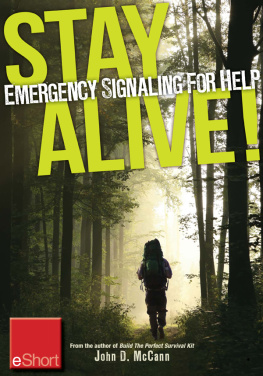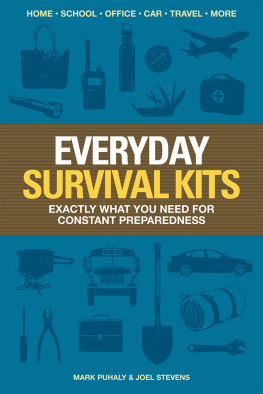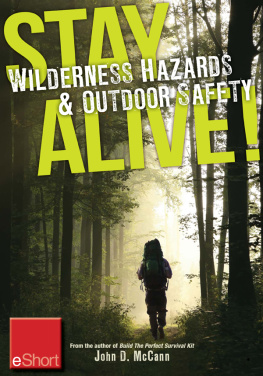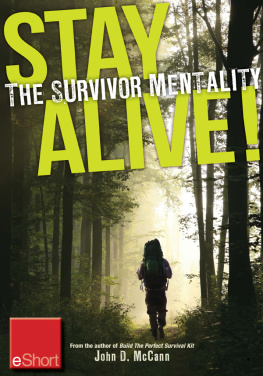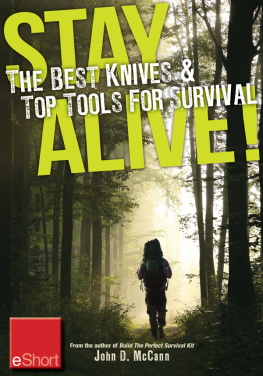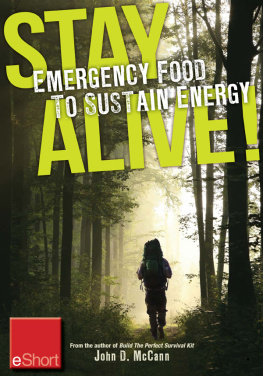Stay Alive: The Indispensable Survival Kit
Know why almost all survival experts advocate carrying a survival kit.
By John D. McCann
I knew an old guy who used to tell his students that your chances of surviving are directly proportionate to how much knowledge you carry in your head and not how many gadgets you carry in your survival kit. Of course you can survive without a survival kit - sometimes - if you are an experienced outdoors person who has dedicated your life to mastering the primitive survival skills. Unfortunately, many people who travel in the outdoors, or become involved in a survival situation, have not been so dedicated.
I have already addressed the importance of learning survival skills, and if you were not interested in skills you would not have purchased this book. But even skill does not always guarantee your survival. Almost every book written by an experienced survival expert advocates carrying a survival kit. Personal survival kits are the foundation for basic survival. They are your first line of defense. If you always maintain and carry a personal survival kit, you will always have the basic components for survival. The important thing to remember is always carry it with you. If you dont have your survival kit with you when you need it, youre already at a disadvantage. If, after reading this chapter, you desire more detailed information in regard to designing and building a survival kit, please refer to my first book, Build the Perfect Survival Kit.

If you buy a commercial survival kit, get one that provides high quality components designed for real survival. (Photo courtesy of Survival Resources)
Commercial kits
There are many types of commercial survival kits available on the market today. Some of these kits are well made and provide the basics, some are sufficient, and most are lacking in serious survival components. Although many of these kits provide the basics, the quality of the components must fit the selling price of the kit. Im not opposed to commercial survival kits, but there are three reasons I prefer self-made kits:
Oftentimes a commercial kit does not provide the highest quality components. Items are not always selected because they are the best for your survival, but because they fit a pre-determined budget. I have always felt that you should spend as much as you can afford on the individual components for your personal survival kit. After all, you might depend on your kit for survival, and what is your life worth? This is no place to be frugal.
Design your kit on an item-by-item basis. This way, you are familiar with the individual components. By packaging your own kit, you not only know what each item is (after all, you selected them), but in an emergency you know where each item is located in your kit. When you buy a kit that is pre-packaged, the kit is often tightly packaged to fit in the selected container. You lose the flexibility of choosing a container that allows space for extra items you might want to add. If you do purchase a pre-packaged kit, be sure you become familiar with it before you need it.
Making your own personal survival kit is not difficult. You can determine what you want your kit to accomplish and design it around those requirements. You can chose your own container, determine the specific components and customize it for your particular needs. It can be the perfect survival kit for you, not one designed by a person who has no idea what your personal needs are. Only you know what is right for you.
The basic functions
I am often asked how a person knows if they have all the required items in their survival kit. Have they forgotten anything that is essential? I always ask them what type of activities might they have to perform if they get in an emergency or survival situation. Although the components are obviously important, dont try to remember the actual component groups by name, but remember those important tasks you must perform. These tasks will remind you of the component groups. As we all know, a fire is an important aspect of survival. Therefore, you should have a means in which to start a fire.
When putting together a personal survival kit, keep in mind the basics. The basics identify specific functions that will have to be performed in order to endure a survival situation. By understanding the functions that must be performed, you gain insight into the type of items, or components, that should be in your kit in order to accomplish those goals. The items in a survival kit should allow you to perform the following functions:
- Build a fire using more than one technique.
- Construct a shelter in various environments.
- Signal for help using more than one technique.
- Gather and purify drinking water and gather food.
- Navigate back to civilization.
- Carry out basic first aid.
Your survival kit should be made up of components selected for the specific purposes outlined above. The component selection process considers not only the use of a component, but also the size. Obviously, if you are going to build a mini kit for a pocket, you would need to select components that not only fulfill the required purpose, but are small enough to fit into the desired container.
Component groups
Once we know the types of activities we must perform in a survival situation, we need to select components to provide us with a means to perform those tasks. In order to complete the predetermined tasks, the following are the desired component groups for a survival kit, no matter the size:
Fire and Light Shelter & Personal Protection
Signaling Navigation
Water & Food Collection Medical
Knives & Tools Multi-Purpose Items
As you can see, if you have selected at least one component for each of the groups above, you should be able to perform the necessary activities possibly required in a survival situation. In some cases, I recommend more than one item from a component group. In the case of fire, an important task, I like to have at least three ways to start a fire. Signaling might require a whistle and a signal mirror. You never know what the situation may require, so having more than one item from a group provides you with more options when you need them.
Seasonal & environmental factors
Keep in mind that survival kits can also be based on seasonal or environmental factors. Of course, we cannot always forecast the environment where a survival situation may occur. That is why the basics always remain the same. However, certain additional items may be chosen for the season or environment that you plan to be in.
Obviously, the type of shelter and clothes chosen for a summer hike will differ from those chosen for winter activities, such as skiing or snowmobiling. This would be a seasonal factor. The items chosen for a desert environment will differ from those chosen for a mountain wilderness or jungle environment. An example would be choosing a machete as a tool for a jungle or tropical environment, whereas an ice ax and folding snow shovel would be necessary for a snow environment. A good knife and folding saw would be appropriate for a wilderness area. Keep these variables in mind when designing your personal survival kit.
Sizing a kit to your needs
Personal survival kits can be broken down further into mini and small kits (which can be carried on your person), medium kits (which can be carried in a fanny or small backpack), and large kits (which can be carried in a large backpack, vehicle, boat, plane, etc.). The size of the kit depends on what you are doing and how much you are willing to carry. Sometimes a combination of kits can be utilized, such as a mini kit in your pocket, a medium kit in your pack, with a large kit in your vehicle. Even though I am an advocate of carrying items that are multi-purpose, I also believe in redundancy.

